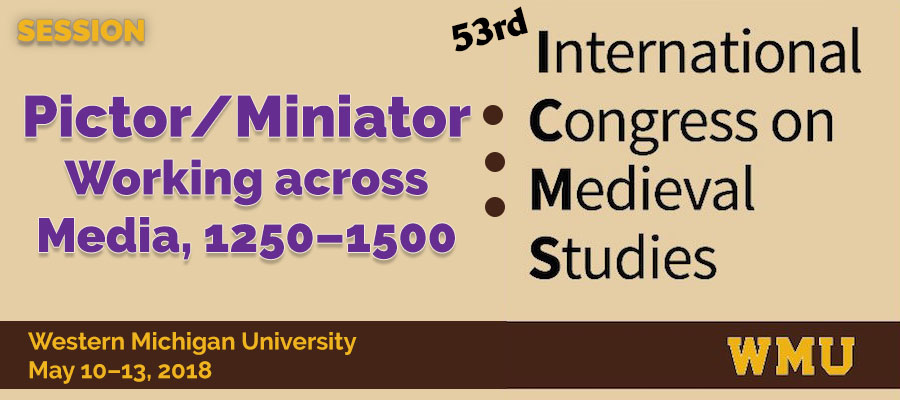Pictor/Miniator: Working across Media, 1250–1500, 53rd International Congress on Medieval Studies, Western Michigan University, May 10–13, 2018
The multimedia fluidity of artists and artisans in the later Middle Ages is an area ripe for investigation. Across diverse regions in Europe and beyond, many illuminators, both named and anonymous, engaged in forms of art-making in addition to the decoration of manuscript books. Some painted frescoes, panels, and ephemera, while others provided designs and supervised the production of stained glass, enamels, tapestries, and other objects. With some frequency, those who specialized in other media were in turn called upon to illuminate books. While modern studies have focused on individual examples of such multi-media talent, the broader implications of this intermedial fluency remain obscure: within the wider art-historical canon, manuscript illumination as an art form is largely seen as derivative or prone to influence from large-scale media.
This session seeks to re-examine the relationship between manuscript illumination and other fields of artistic endeavor in the later Middle Ages. How did artists themselves consider the differing characteristics and ontologies of these varied supports? How did painters adapt their style and working method when engaging with other media and other categories of object? Did the presence of local guild regulations curtail or encourage multi-media practice, and how did this compare region-to-region or to contexts outside of Western Europe? Beyond evident differences in scale, pricing, and technique, interesting issues arise regarding patronage and audience: how different was the clientele for manuscripts compared to that for painting, for example? How did the relative accessibility and visibility of differing art forms affect the visual solutions achieved? Is a book-bound image “freer” or more experimental than a publically visible one?
The session asks these and other questions relevant to those studying the social contexts of art production, the dynamics of reception, materiality, and the technical characteristics of objects. It seeks to be open-minded in terms of methodological approach, and aims to bring together scholars working on diverse material, in order to initiate a larger conversation that can impact the discipline of art history as a whole.
Session contact
Nicholas Herman, University of Pennsylvania
Session sponsored by Schoenberg Institute for Manuscript Studies
